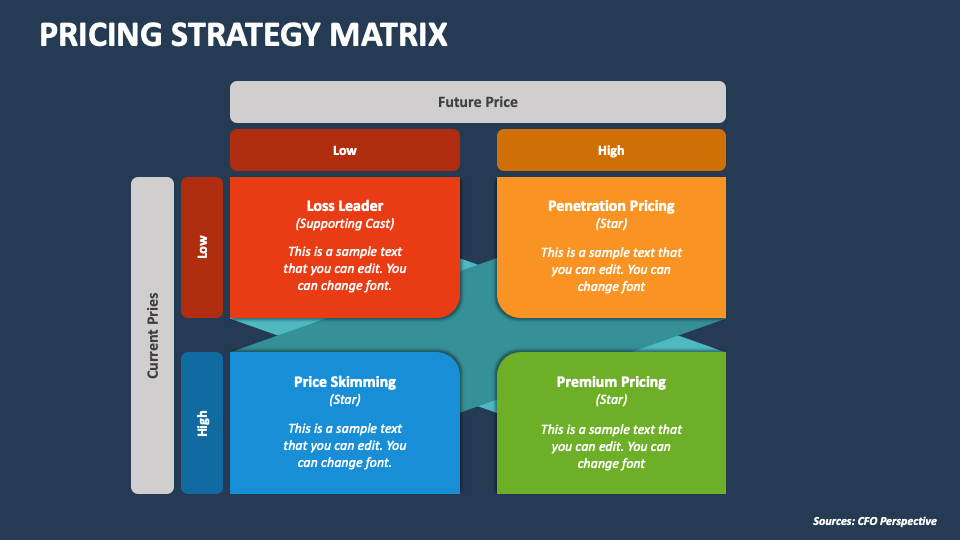Taking full advantage of Revenues with a Data-Driven Pricing Strategy Technique
Taking full advantage of Revenues with a Data-Driven Pricing Strategy Technique
Blog Article

Master Effective Pricing Strategies to Optimize Revenue
In the ever-evolving landscape of business, understanding reliable rates approaches is crucial for businesses aiming to maximize profit. A nuanced understanding of prices psychology can significantly influence consumer habits and investing in choices.
Recognizing Rates Psychology
Recognizing prices psychology is important for organizations aiming to enhance their prices techniques. This field takes a look at how consumers perceive costs and just how these perceptions affect their buying decisions. Secret ideas in rates psychology include the anchoring result, where the initial rate provided functions as a reference factor for customers, and the idea of price level of sensitivity, which varies among different consumer sections.
Furthermore, companies can take advantage of the concept of regarded value, where the viewed advantages of a product or solution can warrant a greater price factor. Premium prices can create an aura of exclusivity, attracting consumers that connect greater prices with superior top quality. On the other hand, emotional pricing, such as establishing a cost at $9.99 rather than $10, can dramatically affect consumer habits by making costs show up more eye-catching.
In addition, shortage and necessity can enhance the viewed value of items, motivating quicker acquiring choices. Understanding these mental triggers enables organizations to create rates methods that not only drive sales but likewise foster client loyalty. Thus, mastering prices psychology is necessary for reliable rates approach formula, bring about improved success and market positioning.
Applying Value-Based Rates

First, conduct detailed marketing research to recognize the worth drivers for your target market. This can include functions, high quality, brand name online reputation, and client service. Next off, section your consumers based on their readiness to pay and the worth they regard. By doing so, you can tailor offerings and rates methods to straighten with various sections.
Continually monitor market problems and client feedback to refine your rates technique over time. By executing value-based rates, services can enhance success while fostering long-term customer loyalty.
Discovering Dynamic Rates Designs
In today's quickly changing market landscape, dynamic rates designs have arised as an effective technique for organizations seeking to optimize revenue and react to fluctuations in demand. These models enable companies to change their rates in real-time based on various variables such as customer behavior, market trends, and supply degrees. By leveraging information analytics and algorithms, organizations can identify ideal pricing factors that take full advantage of sales while remaining affordable.
Dynamic rates can take various types, including time-based rates, where costs vary based on time of day or period, and demand-based rates, which adjusts costs according to existing consumer need. This flexibility not just enhances earnings however also improves consumer contentment by using costs that show real-time market conditions.
Executing vibrant pricing calls for a robust technological infrastructure and a deep understanding of customer sections. Transparent communication regarding rates changes can aid mitigate consumer discontentment and foster trust fund, ultimately leading to continual earnings in a competitive market.
Studying Rival Rates
Monitoring rival pricing is important for companies aiming to maintain an one-upmanship in their particular markets. By assessing competitors' pricing methods, firms can recognize market trends, comprehend customer choices, and adjust their rates appropriately. This analysis involves gathering data on rivals' costs, marketing techniques, and product offerings to educate pricing decisions.
To successfully examine competitor rates, services must make use of numerous devices and methods, such as rate monitoring software, marketing research records, and client comments. This data can disclose how rivals place their items and solutions, allowing organizations to distinguish their offerings or adopt comparable approaches to continue to be pertinent.
Furthermore, it is crucial YOURURL.com to classify competitors into indirect and straight rivals. Straight rivals offer similar items or solutions, while indirect rivals might fulfill the same consumer demand this with various options. Understanding the nuances in between these groups will certainly allow companies to tailor their pricing methods a lot more properly.
Ultimately, recurring rival rates evaluation is vital for making informed rates choices. It enables services to continue to be agile in action to market shifts, ensuring they can confiscate chances and minimize threats related to prices approaches.
Reviewing Rates Performance
Understanding exactly how rival prices influences market characteristics results in an all-natural concentrate on assessing prices efficiency within one's very own company. This assessment is crucial for identifying areas of toughness and opportunities for renovation, eventually enhancing productivity.

In addition, performing normal pricing audits can expose disparities between anticipated and actual performance. This entails contrasting rates information across various segments and channels to recognize variances and identify fads. Additionally, integrating consumer responses can give insights into viewed worth versus actual pricing, making sure alignment with market expectations.
Finally, leveraging information analytics devices can assist in much deeper understandings right into prices performance, enabling services to make data-driven adjustments (Pricing Strategy). By constantly evaluating prices performance, companies can adjust to market adjustments and maximize their methods, making sure continual success in an affordable landscape
Verdict
By leveraging pricing psychology, organizations can boost viewed worth and tailor rates to diverse client sectors. The fostering of vibrant and value-based prices designs facilitates real-time changes based on demand and customer readiness to pay.
Recognizing rates psychology is important for services aiming to enhance their prices approaches. Recognizing these emotional triggers enables organizations to formulate prices approaches that not only drive sales yet likewise foster consumer loyalty. Hence, understanding rates psychology is essential for efficient pricing technique formula, check here leading to improved profitability and market positioning.
By evaluating rivals' prices methods, companies can recognize market trends, recognize consumer preferences, and change their rates accordingly. By leveraging rates psychology, companies can enhance perceived value and tailor prices to diverse consumer sectors.
Report this page